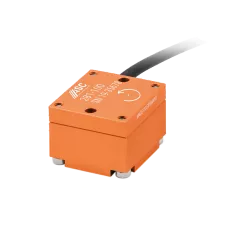The need for a modern alternative
Their existing fiber-optic gyroscopes (FOG) were still accurate but had become a bottleneck. They were bulky, expensive, and required complex calibration. With evolving maritime regulations and expanding operations in GNSS-denied and polar regions, the need for a modern alternative was clear.
Replacing FOG technology with compact MEMS performance
The manufacturer needed a next-generation gyroscopic solution that was:
- Smaller and lighter
- More cost-effective
- Easier to integrate
- Able to maintain ultra-low drift and heading stability over time
Additionally, traditional magnetic compasses were unreliable in polar regions due to the Earth’s weak magnetic field. As these routes became more relevant, the company sought a high-precision MEMS-based gyroscope that could integrate into their new inertial navigation systems (INS) and replace outdated FOG-based systems.

Precision, stability, and marine-ready design
The R&D team evaluated several MEMS gyroscopes on the market. Most lacked the required bias stability and long-term precision needed for professional maritime navigation. After an in-depth evaluation process, the company approached Althen Sensors & Controls. Together with strategic partner ASC GmbH, Althen recommended the ASC 281 (uniaxial) and ASC 283 (triaxial) gyroscopes—both designed for demanding applications like aviation, marine, and defense. In this respect, the ASC 283 was the best choice because of the features or characteristics below.
-
Ultra-low bias stability (<0.1°/h)Ensures minimal drift over time
-
Low angular random walk (ARW)Delivers high precision in dynamic conditions
-
Shock and vibration resistanceIdeal for rough sea environments
-
Wide temperature stabilityReliable in both Arctic and tropical climates
Embedding ASC Gyroscopes into modern navigation systems
Althen’s engineering experts collaborated closely with the manufacturer's R&D team to integrate the ASC 283 triaxial gyroscope into their new gyro-compass platform.
The sensor was embedded within an Inertial Measurement Unit (IMU), combined with accelerometers and advanced sensor fusion algorithms to maximize heading accuracy and system responsiveness.
This was more than just a sensor upgrade—it was a strategic shift to future-proof their navigation technology. By working closely with the customer’s engineering team, we ensured the ASC gyroscopes fit perfectly into their system architecture.


Key implementation steps included:
- Sea trials in real-world conditions, including deployment on large vessels in rough waters
- Integration into autopilot and dynamic positioning systems, replacing legacy sensors
- Development of a hybrid INS system, merging gyroscope data with GNSS for performance in both open and GNSS-denied areas
New benchmark for maritime navigation
After successful sea trials and final validation, the new gyro-compass system was launched—powered by the ASC 283 MEMS gyroscope. The seamless integration with autonomous navigation systems resulted into the following improvements below.
-
30% reduction in total system costvs. FOG-based solutions
-
Increased navigation precisionespecially in polar and GNSS-denied regions
-
Faster response timesand improved stabilization in turbulent conditions
-
Longer operational lifetimethanks to robust MEMS technology
Related products
Uniaxial or triaxial gysroscopes
Scalable navigation for autonomous and conventional vessels
As the manufacturer expands its product line to include autonomous marine vessels and polar exploration units, the ASC gyroscopes remain a critical component of their navigation systems.
Thanks to the collaboration with Althen and ASC GmbH, they now have a scalable, cost-effective, and high-performance solution ready to support next-generation maritime navigation—no matter how rough the seas.



